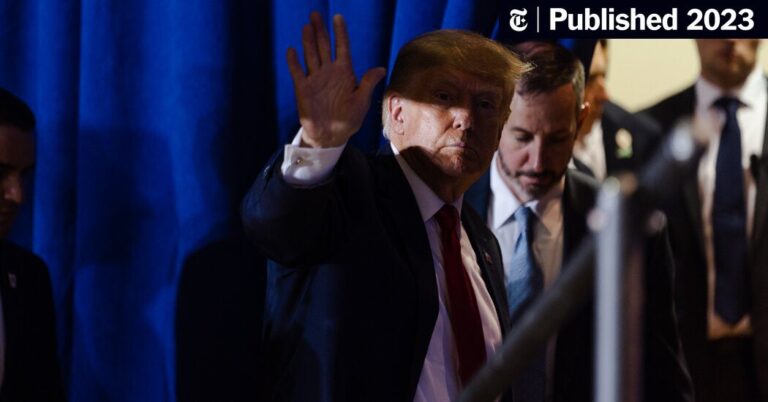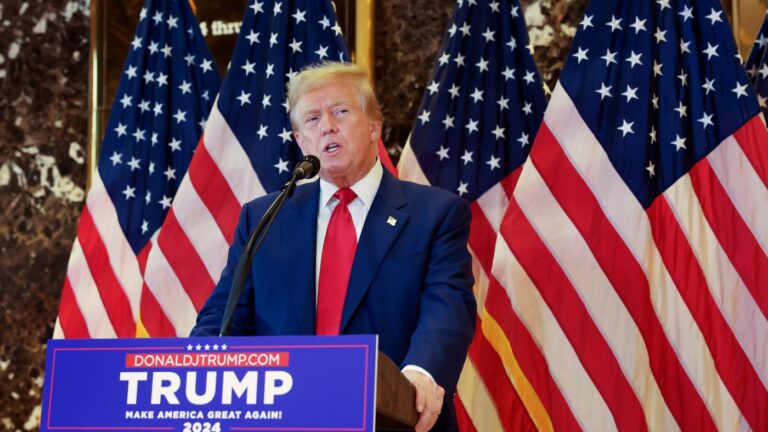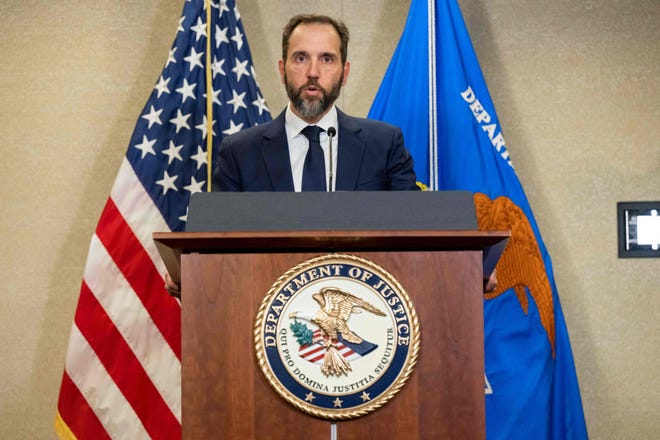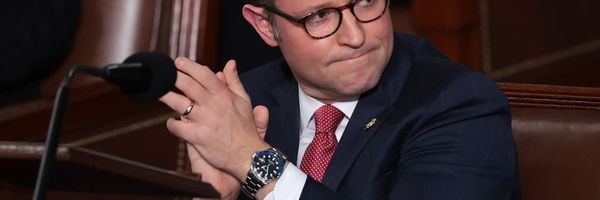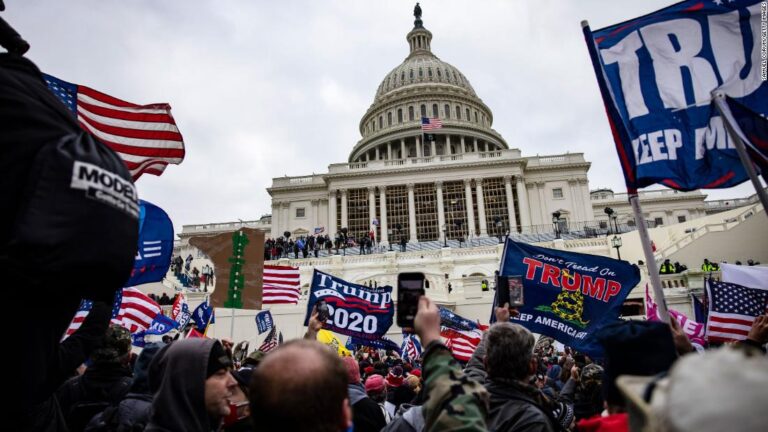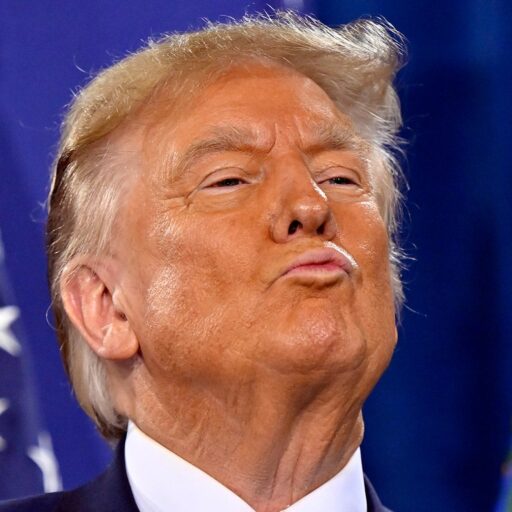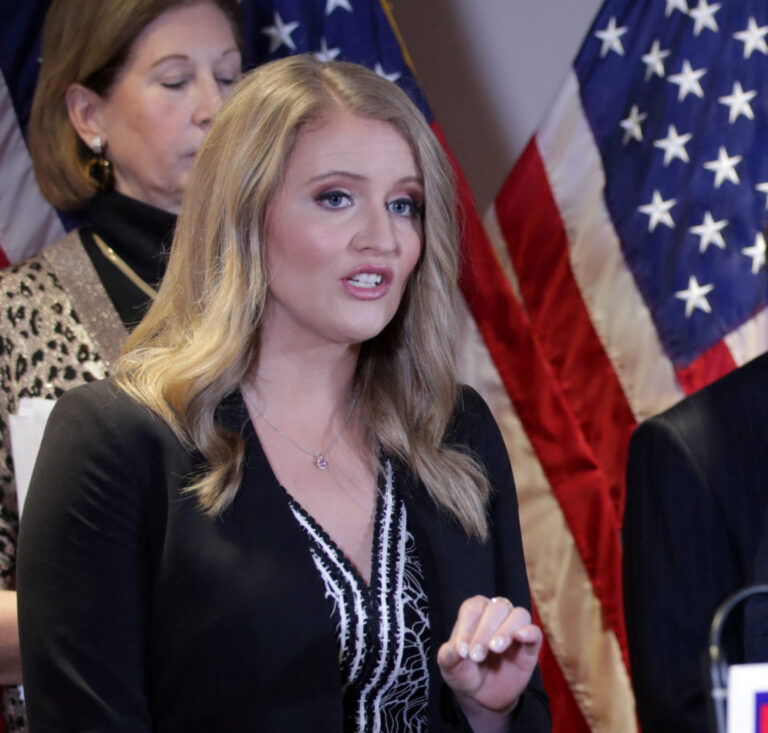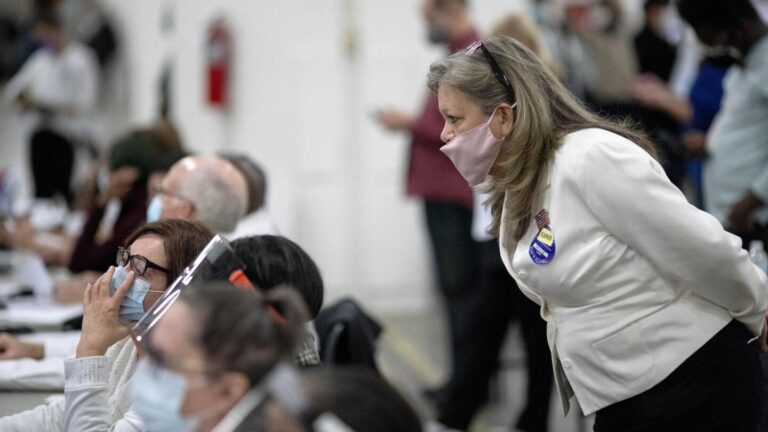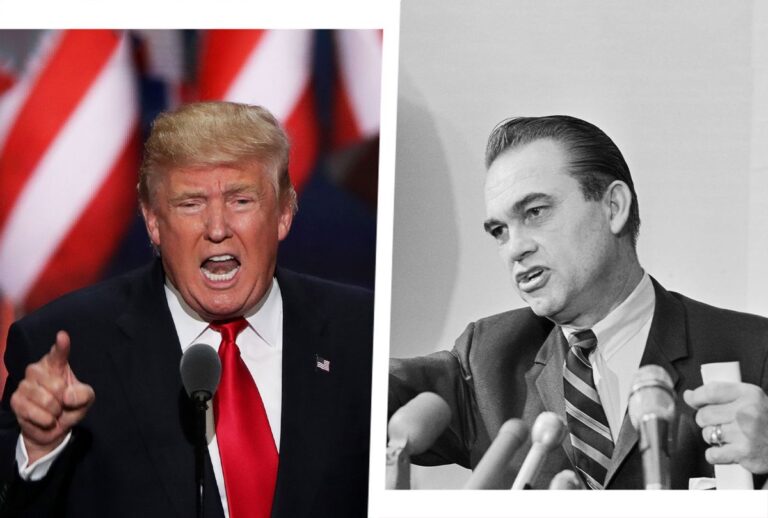Former President Donald J. Trump almost immediately began citing a litany of falsehoods Wednesday night during a town hall-style meeting in New Hampshire broadcast on CNN.
After incorrectly characterizing the 2020 presidential election as “rigged,” Mr. Trump repeated a number of other falsehoods that have become staples of his political messaging. He misleadingly and wrongly described his record, the events of Jan. 6, 2021, his handling of classified documents, foreign policy, immigration policy, the economy and a woman whom a jury found he sexually abused.
Here’s a fact check of some of his claims.
What WAS Said
“We got 12 million more votes than we had — as you know — in 2016.”
This is misleading. Mr. Trump received 74 million votes in the 2020 presidential election, 12 million more than he received in the 2016 election. But, of course, President Biden received even more votes in 2020: 81 million.
Mr. Trump then repeated his lie that the 2020 election was rigged. As the CNN moderator Kaitlan Collins noted, no evidence has surfaced to support his false claims of an army of people voting multiple times, dead people voting and missing ballots.
What WAS Said
“I offered them 10,000 soldiers. I said it could be 10, it could be more, but I offered them specifically 10,000 soldiers.”
This is false. Mr. Trump was referring to the events of Jan. 6, 2021, when his loyalists stormed the Capitol in a bid to stop the certification of Mr. Biden’s election victory. There is no evidence that Mr. Trump ever made a request for 10,000 National Guard troops or that the speaker of the House at the time, Nancy Pelosi, rejected such a demand. The speaker does not control the National Guard.
Mr. Trump also claimed that the acting defense secretary at the time, Christopher C. Miller, backed up his account. Vanity Fair reported in 2021 that Mr. Trump had floated the 10,000 figure to Mr. Miller the night of Jan. 5. But in 2022, Mr. Miller told a House committee investigating the events of Jan. 6 that he was “never given any direction or order or knew of any plans of that nature.”
There is no record of Mr. Trump making such a request either. The Pentagon’s timeline of events leading up to the riot notes that the Defense Department reviewed a plan to activate 340 members of the District of Columbia’s National Guard, “if asked.” But the timeline makes no mention of a request for 10,000 troops by Mr. Trump. Nor did a Pentagon inspector general report on the breach, which instead referred to suggestions by Mr. Trump that his rally on Jan. 6 had been conducted safely. A Pentagon spokesman also told The Washington Post that it had “no record of such an order being given.”
What WAS Said
Former Vice President Mike Pence “should have put the votes back to the state legislatures, and I think we would have had a different outcome.”
This is false. The vice president does not have the power or legal authority to alter the presidential election, as Mr. Pence has repeatedly and correctly noted.
A House committee investigating the attack on the Capitol found that John Eastman, a conservative lawyer who was the chief architect of Mr. Trump’s attempts to overturn the 2020 election, had admitted to Mr. Trump two days before Jan. 6 that his plan to have Mr. Pence to halt the vote certification process was illegal.
What WAS Said
“This woman, I don’t know her. I never met her. I have no idea who she is.”
This is false. A Manhattan jury on Tuesday found that Mr. Trump had sexually abused and defamed E. Jean Carroll, a writer. Regardless of whether Mr. Trump remembers meeting Ms. Carroll, there is clear evidence that the two have met: a black-and-white photo of the two along with their spouses at the time.
What WAS Said
“We created the greatest economy in history. A big part of that economy was I got you the biggest tax cuts in the history of our country, bigger than the Reagan cuts.”
This is false. Average growth, even before the coronavirus pandemic battered the economy, was lower under Mr. Trump than under Presidents Bill Clinton and Ronald Reagan.
Nor were the tax cuts Mr. Trump signed into law in 2017 the “biggest” ever. According to a report from the Treasury Department, the 1981 Reagan tax cut is the largest as a percentage of the economy (2.9 percent of gross domestic product) and by the reduction in federal revenue (a 13.3 percent decrease). The Obama tax cut in 2012 amounted to the largest cut in inflation-adjusted dollars: $321 billion a year. By comparison, Mr. Trump’s 2017 tax cut was about $150 billion annually and amounted to about 0.9 percent of gross domestic product.
Mr. Trump also claimed to have presided over “zero” inflation. Although some months had zero inflation or even price declines as the coronavirus pandemic hit, the Consumer Price Index increased 1.2 percent overall in 2020, the last full year he was in office, and had risen at a 1.4 percent annual rate in January 2021, his last month as president.
What WAS Said
“If you look at Chicago, Chicago has the single toughest gun policies in the nation. They are so tough you can’t breathe, New York, too, and other places also. All those places are the worst and most dangerous places so that’s not the answer.”
This is misleading. Opponents of firearm restrictions frequently cite Chicago as a case study of how tough gun laws do little to prevent homicides. This argument, however, relies on faulty assumptions about the city’s gun laws and gun violence.
There were more gun murders in Chicago than in any other city in the United States in 2020, fueling the perception that it is the gun violence capital of the country. But Chicago is also the third-largest city in the country. Adjusted by population, the gun homicide rate was 25.2 per 100,000, the 26th highest in the country in 2020, according to data compiled by the gun-control group Everytown for Gun Safety.
The three cities with the highest gun homicide rates — Jackson, Miss., Gary, Ind., and St. Louis — had rates double that of Chicago’s. All are in states with more permissive gun laws than Illinois.
Chicago’s reputation for having the strictest gun control measures in the country is outdated. The Supreme Court nullified the city’s handgun ban in 2010. An appeals court also struck down a ban on carrying concealed weapons in Illinois in 2012, and the state began allowing possession of concealed guns in 2013, as part of the court decision.
Today, Illinois has tougher restrictions than most states, but it does not lead the pack, ranking No. 7 in Everytown’s assessment of the strength of state gun control laws, and No. 8 in a report card released by the Giffords Law Center, another gun control group. Conversely, the state ranked No. 41 in an assessment on gun rights from the libertarian Cato Institute.
Gun control proponents have also argued that the patchwork nature of gun laws in the country makes it difficult for a state like Illinois with tough restrictions on the books to enforce those in practice. A 2017 study commissioned by the City of Chicago found, for example, that 60 percent of guns used in crimes and recovered in Chicago came from out of state, with neighboring Indiana as the primary source.
What WAS Said
“I built the wall. I built hundreds of miles of wall and I finished it.”
This is false. The Trump administration constructed 453 miles of border wall over four years, and a vast majority of the new barriers reinforced or replaced existing structures. Of that, about 47 miles were new primary barriers. The United States’ southwestern border with Mexico is over 1,900 miles, and during his campaign, Mr. Trump had vowed to build a wall across the entire border and make Mexico pay for it. Mexico did not pay for the barriers that had been constructed.
What WAS Said
“I got with NATO — I got them to put up hundreds of millions of dollars that they weren’t paying under Obama and Bush and all these other presidents.”
This is misleading. Under guidelines for the North Atlantic Treaty Organization, members agreed to commit a minimum of 2 percent of G.D.P. on their own defense, but few nations actually do so. They do not “pay” the alliance directly.
NATO members agreed that nations currently not meeting the 2 percent goal would do so in the next decade, and that nations meeting it would continue to do so — but they made this pledge in September 2014, years before Mr. Trump became president.
“And the reason for this is not Donald Trump — it’s Vladimir Putin, Russia’s actions in Crimea and aggressive stance,” said Ivo H. Daalder, a NATO ambassador under President Barack Obama, previously told The New York Times.
What WAS Said
“You know who else took them? Obama took them.”
This is false. Mr. Trump has repeatedly and wrongly compared his handling of classified documents with that of his predecessor.
After his presidency, Mr. Trump took a trove of classified documents — including some marked top secret — to Mar-a-Lago, his Florida estate.
In contrast, the National Archives and Records Administration, which preserves and maintains records after a president leaves office, has said in a statement that Mr. Obama turned over his documents, classified and unclassified, as required by law.
The agency has also said it is not aware of any missing boxes of presidential records from the Obama administration.
Mr. Trump then falsely claimed that Mr. Biden “took more than anybody,” about 1,800 boxes. But that number refers to a collection of documents Mr. Biden had donated to the University of Delaware in 2012 from his tenure as a senator representing the state from 1973 to 2009. Unlike presidential documents, which must be released to the National Archives once a president leaves office, documents from members of Congress are not covered by the Presidential Records Act. It is not uncommon for senators and representatives to give such items to research or historical facilities.
The university agreed not to give the public access to Mr. Biden’s documents from his time as senator until two years after he retired from public life. But the F.B.I. did search the collection in February as part of a special counsel investigation and in cooperation with Mr. Biden’s legal team. The Times reported at the time that the material was still being analyzed but did not appear to contain any classified documents.
What WAS Said
“I didn’t ask him to find anything. If this call was bad — I said you owe me votes because the election was rigged. That election was rigged.”
This is false. In a taped January 2021 call, Mr. Trump said the words “find 11,780 votes” as he pressured Secretary of State Brad Raffensperger of Georgia to overturn election results in his state.
“All I want to do is this,” he said in the call. “I just want to find 11,780 votes, which is one more than we have because we won the state.”
Mr. Trump also accused Mr. Raffensperger of “not reporting” corrupt ballots and ballot shredding (there is no evidence that this happened in Georgia), and told him that “that’s a criminal offense.”
